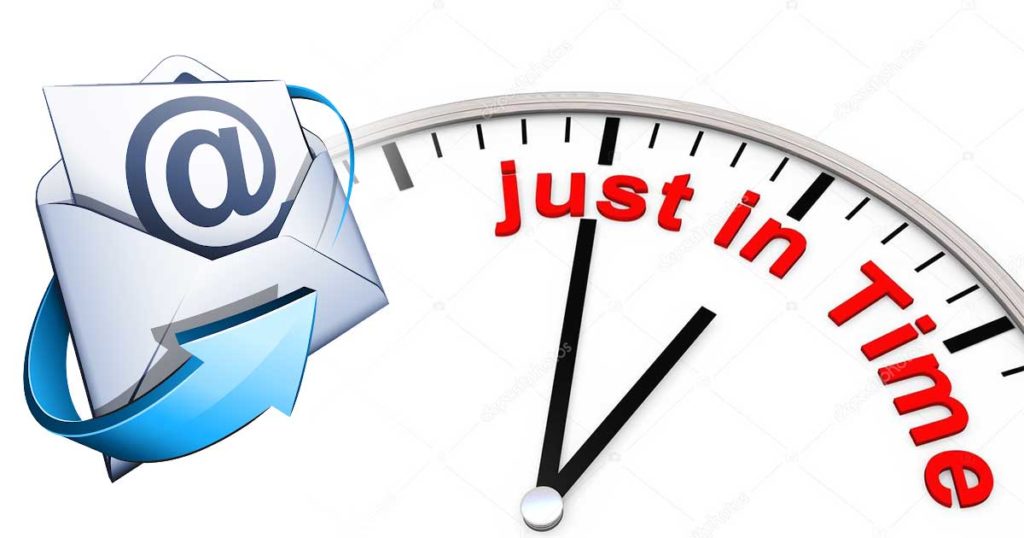The trip you’ve been promoting all year is coming down to the wire — and you still have three spaces left to fill. Fill those spaces and you’ll make money. Leave them empty and you are going to take it in the shorts. What do you do?
As retailers, we all face situations like this from time to time. It may be a trip or class we need to fill, an activity we need to promote, a call to action (i.e., “Write your county commissioner today and tell him not to vote to ban divers from the lake…”) or simply merchandise you need to move right now.
Bear in mind that, in an ideal world, you’d be able to prevent situations like these from arising in the first place. After all, you are supposed to sell merchandise before it becomes obsolete — right? The world, however, is not always an ideal place.
1 Dodging the Tax Man
My introduction to the concept of “just in time” advertising and promotion came in the late 1980s. A friend who had recently purchased a North Carolina dive store found himself in an unusual predicament.
Upon purchasing the store, he’d implemented a number of innovative ideas that led to a steady increase in quarterly sales. Unfortunately, his quarterly estimated tax obligation was escalating at an equal pace. By the third quarter, when seasonal sales had started declining, his tax bill outstripped his cash on hand.
What to do? Bear in mind, this was before the days of the Internet. It was not, however, before the days of the US Postal Service.
My friend’s solution was to do a first-class postcard mailing announcing a one-day sale. The sale generated more than sufficient cash flow to solve his immediate problem.
Understand that this does not represent the most ideal way to do business. Much of the merchandise my friend moved during his one-day sale were items that would otherwise sell at higher margins. So, in the long run, the sale most likely cost him in terms of profitability. Nevertheless, it beat having to explain things to the IRS.
2 “I Told Them They Had to Be There…”
My next experience with “just in time” advertising came in 1997. A training agency I was developing materials for at the time had just introduced a recreational Nitrox Diver program. Another North Carolina retailer offered me the opportunity to try out the materials I’d developed on a group of his instructors.
To make the trip worthwhile, he suggested I conduct a consumer-level Nitrox Diver course at the same time. “Where will we get students on such short notice?” I asked. (This was a last-minute affair.)
“Leave that to me.” my friend replied.
I arrived at the store a few days later, expecting to see three or four instructors and, perhaps, one or two diver-level students. Imagine my surprise, then, so see the classroom packed with more than 20 individuals.
“How did you do it?” I asked.
“That’s easy,” my friend replied, “I just sent everyone an email and told them to be here.”
It’s worth noting that, in 1997, the Internet was still a novelty. There was virtually no spam and email had a lot more impact than it does now. Still the results were impressive.
3 Things Get Sophisticated
In the last ten years, email as a marketing and promotion tool has matured substantially. Many dive stores now send out electronic newsletters in lieu of printed ones, which have become too expensive to print and mail. Email is also well suited for last-minute promotions. Case in point:
Recently, I got a message from one of the owners of a dive store I once managed in the Chicago suburbs. She told me that a couple who ran a dive operation in the eastern Caribbean was going to be in town in two weeks, and had offered to do a one-evening slide show and seminar. The problem was how to promote it on short notice.
We put together a special email, using one of Constant Contact’s “Invitation” templates. Unlike the newsletter template the store normally uses, this one is short and to the point. It’s also effective. Despite the short notice, the store filled the seminar with over two dozen people.
Email can be among the most cost-effective advertising and promotion tools dive stores have at their disposal. It does, however, have several limitations:
- It won’t reach everyone on your mailing list: Dive stores typically have valid email addresses on only a fraction of their customer base.
- Not everyone who gets your email will read it: The best you can hope for is that around 25 percent of those who receive your email will open and read it. Fewer still will click through on links to your website.
The chief benefits of email are that it’s fast and cheap — and that, even though you may only have email addresses for some of your customers, they may still be the ones who account for most of your business.
Email is no panacea, though. Shortly after the store in Chicago sent out its seminar invitation, another store I know in the mid-Atlantic region decided to use email to promote a last-minute trip to south Florida.
The format they used was similar to the one used by the store in Chicago. It was opened and read by a similar number of people. And, last I checked, it didn’t result in a single person signing up for the trip.
The fact is, neither email nor any other form of advertising and promotion can work miracles.
While you might be able to use this sort of “just in time” advertising to fill the last one or two spaces in a trip, you are unlikely to fill an entire five-day trip with less than a month’s notice.
4 No Substitute for Personal Contact
A store I worked with for over 20 years had particularly good luck one year in filling all of their trips — with one exception. Earlier that year, one of the owners told me, “We really need to push this particular trip; there are still several spaces remaining open.” Imagine my surprise, then, when two months later I learned that the stored had the trip completely filled.
“What happened?” I asked. The store owner explained:
- First, they switched group leaders. Her husband (someone well known to all the store’s customers) took over the trip.
- Second, they hit the phones and let every customer on their “A” list know that he’d be the one leading it.
That was all it took. The trip filled in short order.
Again, in an ideal world, you’d never need to promote anything at the last moment. Unfortunately, none of us are perfect. As a result, we sometimes need to advertise effectively on short notice — or suffer the consequences. When those times arise, there are several tools we can choose from:
- Email is fast and cheap — but will only reach a small (but important) percentage of your customers.
- Postcards will reach a greater number of people, but cost money to print and mail — and are easily discarded with other perceived “junk” mail. (Note: Postcards are most effective when they contain some kind of money-saving coupon.)
- Sometimes, there is simply no substitute for personal contact. You need to hit the phones, call your best customers, and make your case in person.
The most effective last-minute promotions may employ two or all three of these methods. We may not like having to do business this way (and shouldn’t get in the habit of it). Nevertheless, it’s nice to know, however, that when the need arises, we can.


